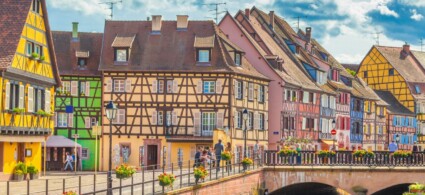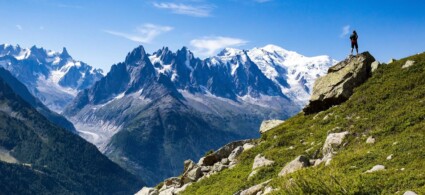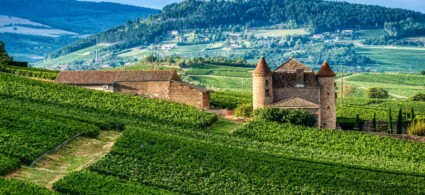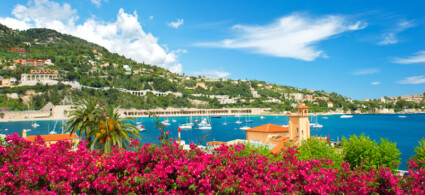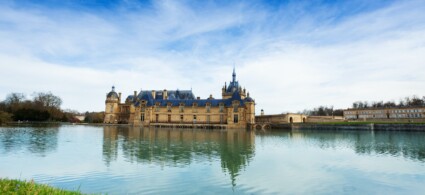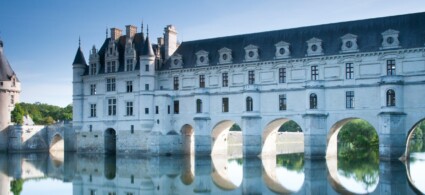

 Until 2016, there were 22 regions in France. However, the institutional reform decided to amalgamate the smaller ones and reduce the number of French regions: as of 1 January 2016, there are now 13 French regions on European soil and 5 that are part of the French overseas territories. The latter are the former French colonies: French Guiana in South America, Guadeloupe and Martinique in the Caribbean Sea, and Réunion and Mayotte in the Pacific Ocean.
Until 2016, there were 22 regions in France. However, the institutional reform decided to amalgamate the smaller ones and reduce the number of French regions: as of 1 January 2016, there are now 13 French regions on European soil and 5 that are part of the French overseas territories. The latter are the former French colonies: French Guiana in South America, Guadeloupe and Martinique in the Caribbean Sea, and Réunion and Mayotte in the Pacific Ocean.
The process of amalgamating the old regions has led to the creation of new institutional realities, which can create doubt and confusion in those who are planning a trip to France.
Let’s take a look at how the new French regions (in bold) have been amalgamated and brought together, alongside those that have remained unchanged.
Overseas regions:

The small region of Île de France is home to the beautiful and magnificent city of Paris, the French capital, as well as other important cities such as Saint-Denis and Versailles.
Paris, also known as the Ville Lumiere enchants millions of visitors every year, who flock from all over the world to savour its retro charm and enchanting romantic atmosphere.
Paris encompasses the best of France: from the Louvre Museum for ancient art, the Centre Pompidou for contemporary art and the Musée d’Orsay for the Impressionists, to the picturesque views of the Seine, from the iconic Eiffel Tower to the elegance of the Champs Élisées, the streets of luxury and shopping, and the romance of Montmatre and the Latin Quarter.
And just a stone’s throw from the centre of Paris we also find the richness of the Palace of Versailles, with its 2300 rooms and magnificent geometric gardens. Not to mention Disneyland Paris, the fabulous amusement park celebrating cartoons, a must-see attraction for families.

Sunny, elegant and colourful. Provence attracts visitors from all over the world for one of the most beautiful sights in Europe: the lavender fields in bloom, stretching as far as the eye can see, colouring the landscape with magic.
Provence is a complete region: on the one hand the Alps enclosing the deep Gorges du Verdon, on the other some of the most picturesque and dynamic cities in the South of France such as Marseille, Aix en Provence and Avignon, which bewitched impressionist painters of the calibre of Van Gogh, Cezanne and Paul Gauguin.
The mix becomes complete with the perched villages of the hinterland, such as Roussillon and Isle sur la Sorgue, and the Roman archaeological sites, such as the spectacular amphitheatre in Arles and the Roman theatre in Orange.
Making this region absolutely unique are the unspoilt landscapes of the Camargue, a land of salt marshes, wild horses, flocks of flamingos and gypsies.

The French Riviera is the stretch of French coastline between the Italian border and Provence and is one of France’s most popular destinations. Famous for being the haunt of VIPs and the jet set, the Côte d’Azur celebrates popularity with the famous Cannes Film Festival and is renowned for its nightlife and beaches in Nice, St Tropez and Antibes.
However, the Côte d’Azur also knows how to surprise with small, semi-hidden gems, perched on the heights of the hinterland: the villages of Roquebrune Cap Martin, Èze, Ramatuelle or Saint Paul de Vence are charming villages, all worth photographing.
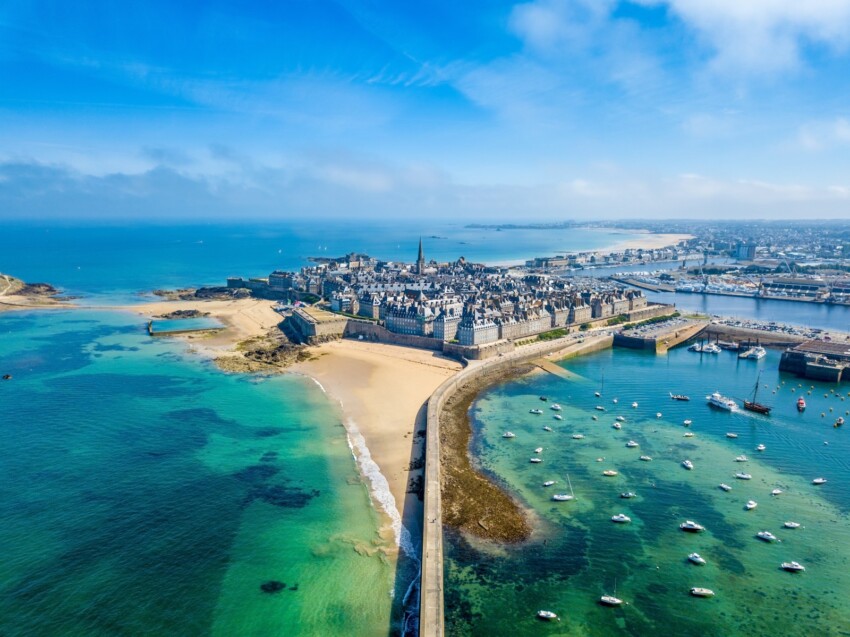
Facing the English Channel and the Atlantic Ocean, Brittany is the westernmost tip of France and is loved by tourists for its rugged and wild character, which blends with its magical and mysterious aura.
Starting from picturesque Saint Malo, one follows the enchanting Pink Granite Coast, a coastline characterised by sheer cliffs where the stone takes on this pinkish colour. The Customs Trail follows this very profile for 1300 km, encountering deep fjords, lush green meadows and picture-postcard lighthouses.
Also not to be missed is Carnac, on the opposite side of the peninsula: here you will find one of the oldest sites in France, comparable to Stonehenge, a megalithic settlement with more than 3000 menhirs spread over an area of 6 kilometres.
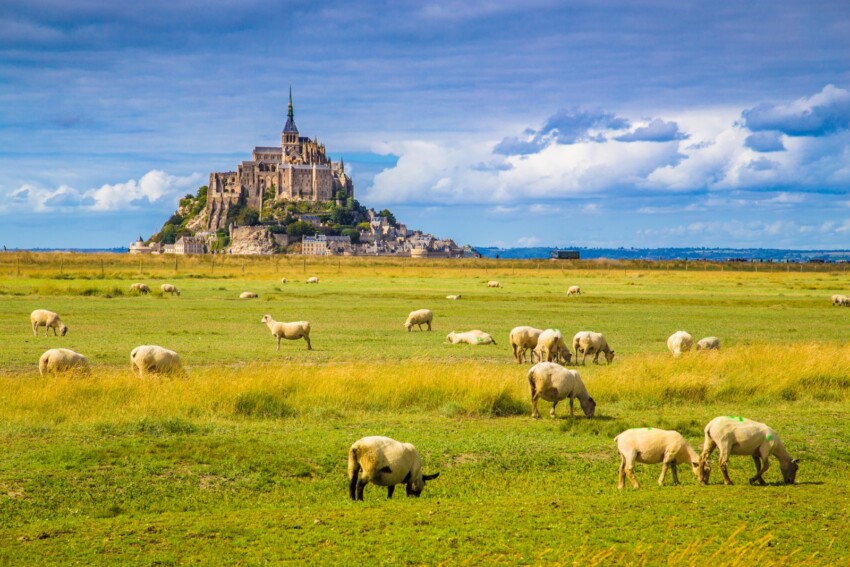
On the border with Brittany lies Normandy, one of the most interesting regions of France, exquisitely vintage, medieval and rich in history.
On one side is the granite cliff coast of Etretat, the port of Le Havre and the charming fishing village of Honfleur, which looks like something out of an impressionist painting.
On the other, the Normandy landing beaches and military cemeteries tell of one of the most dramatic pages of 20th century history: the D-Day landing of the Allies during World War II to combat the Nazi advance in Europe.
This land, home of Calvados and Camembert, is above all famous for its most famous attraction: Mont Saint Michel, the religious sanctuary built in medieval times on a small island surrounded by Europe’s most impressive tides.
Also not to be missed is Rouen and its majestic Gothic cathedral, Monet’s house in Giverny and the 70-metre-long medieval tapestry of Bayeux, which narrates the Norman conquest of England,

One of the great architectural and cultural jewels of France is the Loire Valley, a large UNESCO World Heritage site.
Along the enchanting course of the Loire River, there is an idyllic landscape dotted with delightful, perfectly preserved medieval towns such as Bourges, Tours or Orleans, surrounded by vineyards as far as the eye can see.
But the real pride of this region are its castles, almost 300 of them, which leave visitors literally spellbound. In the Loire Valley, in fact, you can admire the best of French Renaissance architecture, thanks to the spectacular châteaux of Chambord, Chenonceau, Azay le Rideau and Blois, or the more imposing fortresses of Angers, Saumur and Chinon, or the masterpieces of Villandry and Cheverny.
To complete a truly unique panorama, the great cathedral of Chartres, one of the most spectacular in France, and the dynamic city of Nantes, cradle of modern culture.

If you love fine wines and fairytale atmospheres, the tiny region of Alsace is your ideal destination.
Recently incorporated into the Grand Est Region, along with Champagne, the Ardennes and Lorraine, and nestled between Switzerland and Germany, Alsace boasts some of the most beautiful cities in France, such as Colmar and Strasbourg, famous for their Gothic cathedrals and perfectly preserved medieval city centres.
Along the Wine Route, an itinerary that winds through vineyards as far as the eye can see, are a series of exceptional medieval villages: with their delightful half-timbered houses in delicate pastel colours, they look like something out of a storybook.
Riquewihr, Eguisheim, Ribeauvillé and Kaysersberg, are just a few of these beautiful villages that, during the Christmas Markets, take on a magical appearance, unleashing all the fabulous festive atmosphere.

Halfway between French and Italian culture, Corsica is a rugged and wild land that alternates, Caribbean-coloured beaches such as Santa Giulia, Rondinara or Saleccia, with lively and sparkling, wonderfully scenic towns such as Ajaccio, Bonifacio and Bastia.
But the island is above all a mountain in the sea, covered with unspoilt heights that are ideal to travel by car or motorbike before reaching its unspoilt, hidden beaches that are so reminiscent of nearby Sardinia.
The Scandola Nature Reserve, the Calanques of Piana, the Agriates desert and the beautiful Cap Corse, to name but a few of the most spectacular areas, are not to be missed.

Endowed with an exceptional historical, cultural and natural heritage, the Auvergne-Rhone-Alps region is full of surprises. Situated close to the Italian and Swiss borders, in the heart of the French mountains, its wooded territory, mountain ranges, lakes and rivers offer the ideal setting for enjoying the outdoors and spending time between sport and tourism.
In fact, the Auvergne-Rhône-Alpes region is both the world’s leading winter sports region, France’s leading outdoor sports region and the second national tourist region after the Ile de France.
The area is distinguished by its vast collection of destinations, all unique and varied, first and foremost the enchanting city of Lyon, capital of gastronomy, the Alps and Mont Blanc, the roof of Europe, with its many ski resorts attracting tourists from all over the world from December to the end of April. The region has more than 175 winter sports resorts: Deux-Alpes, Chamonix, Mégeve, Val d’Isère are the most famous, but we also recommend Courchevel, Val Thorens and Tignes.
Auvergne-Rhône-Alpes is not only synonymous with sports and skiing, but also with culture and cities rich in history, such as Annecy, which attracts visitors with its massive castle and the incredible Alpine colours of its lake, or the museums and liveliness of Grenoble, nestled at the foot of three mountain ranges, or Saint Etienne, the capital of silk processing and design.
Not to mention picturesque picture-postcard villages such as Bourg en Bress, with its Gothic and medieval old town and Clermont-Ferrand, with its rich Romanesque heritage, built in volcanic stone.

Surprising and lively, Haute-France and Picardie hold enchanting and little-known locations.
Logically located in the north of the country, the Hauts-de-France region boasts wonderful cities such as Lille and Amiens, which are home to an architectural heritage of great beauty and have a remarkable cultural offer: they both boast extraordinary museums that passionately tell the story of how the area has been marked by the great events of history, imposing cathedrals and medieval alleyways where time seems to stand still.
From a historical site or a flamboyant castle such as Chantilly, one then reaches the coast, which reveals the quiet seaside resorts of the Côte d’Opale, with its sheer chalk cliffs, the Baie de Somme and Calais, with its imposing red-brick town hall and art deco buildings.

Land of surfing and rugby, foie gras and great Bordeaux wines, New Aquitaine brings together three regions: Aquitaine, Limousin and Poitou-Charentes and is the largest of the New French regions.
Located in the south-west of France and facing the Atlantic Ocean, it is a region rich in tourist attractions ranging from the Atlantic coast to the Pyrenees mountains, passing by historical cities, renowned vineyards and natural heritage.
This region is home to the second largest vineyard in France in the Dordogne and Perigord area and to high-quality products that make its gastronomic landscape particularly interesting.
Its landscapes and architectural heritage compete with its gastronomy. New Aquitaine stretches along 720 km of coastline on the Atlantic side, alternating heaths and forests, valleys and peaks, cities with a rich cultural landscape, including Bordeaux and its elegant historic centre, Poitiers and Limoges, rich in castles and prestigious religious buildings.
New Aquitaine is also rich in nature, preserved with three regional nature parks (Marais Poitevin, Plateau de Millevaches and Périgord-Limousin) and the Arcachon Bassin marine nature park. There are tourist gems of great beauty such as the Dune du Pilat, the old town of Sarlat and the historic city of Saint-Emilion, the seaside citadel of La Rochelle, the enchanting Biarritz, home of surfers, or Île de Ré, a true jewel of the Atlantic coast.

Good food, conviviality and a love of local produce are part of Burgundy‘s DNA. Get ready for experiences that will thrill your five senses and put the palate at the centre of your stay. Indeed, with a rich and incredible heritage, Burgundy is also known for its succulent gastronomy and renowned wines.
Dijon is the best known city in Burgundy and is considered the capital of the region. It is famous for its many museums, including the Museum of Fine Arts, the Museum of Life in Burgundy and the Mustard Museum. Dijon also has magnificent medieval architecture, visible in its cobbled streets and historic buildings. And, of course, Dijon mustard is a world-famous culinary speciality.
Cluny is a medieval town renowned for its abbey, one of the largest and most powerful in Christian Europe in the Middle Ages. Founded in 910, Cluny Abbey was an important centre of monastic reform, with great influence on the architecture, art and culture of the time.
Auxerre will enchant you with its cathedral, its half-timbered houses and its clock tower. Located in the north-west of Burgundy, it can be reached in only 2 hours from Paris. It is home to a remarkable medieval heritage with many preserved historical houses and buildings.
Finally, Besançon awaits you with its citadel, historic centre and countless museums. You will be enchanted strolling along the banks of the Doubs, in front of the city’s beauty. A UNESCO-listed city, Besançon’s rich architectural heritage traces more than 2,000 years of history and offers numerous places of interest.

Tastings and walks in the heart of the vineyards, wine pairings, sublime landscapes and hillsides, houses and cellars on the UNESCO World Heritage list: Champagne-Ardenne is known throughout the world for the quality of its vineyards and cellars.
Don’t miss the city of Reims, with its cathedral, a jewel of Gothic art, famous for having been the coronation place of most of the kings of France including Clovis, François I and Louis XIV. Be captivated by its great vaults, its stained glass windows and its façade decorated with sumptuous sculptures.
Troyes is home to one of the most beautiful and richest collections of half-timbered houses, dating from the Middle Ages and the Renaissance, and constituting a unique and precious heritage. They are characterised by their exposed wooden structure, which forms a zebra pattern, often painted in bright colours, giving them a picturesque and unique charm.

With year-round sunshine and an exceptionally rich heritage, the Occitania region never ceases to reveal its treasures. One only has to travel to its main cities, Toulouse and Montpellier, to discover exceptional monuments and sites with an ever-rich cultural activity.
Its perched villages and even its majestic bridges also make it an astonishing territory, where man has created real gems. In terms of nature, from the Mediterranean Sea to the Pyrenees via canyons and vineyards, you will find all the elements for an unforgettable holiday.
Carcassonne is an incredible medieval fortified city, perfectly preserved, with its 3 kilometres of ramparts and 52 towers visible for miles around.
The spectacle of the ramparts of the town of Aigues-Mortes plunging into the pink water of the Salins du Midi will leave you speechless, as will that of the flamingos and wild horses of the Camargue.
The view of the Pont du Gard aqueduct with its three tiers of arcades and the lush nature that surrounds it is equally breathtaking. Don’t miss the famous Arena of Nimes, as well as the Maison Carré and the Fontaine gardens that frame the Roman vestiges.
Rocamadour is one of the most emblematic villages to visit in Occitania, with its medieval houses literally clinging to the cliff face, 150 metres above a canyon. On the other hand, Albi is the UNESCO World Heritage Episcopal city, housing a masterpiece of medieval art, the Last Judgement in the cathedral and the magnificent Toulouse-Lautrec Museum.
Also not to be missed are Perpignan, a sunny city near the Spanish border, Lourdes for those who want to delve into the religious aspect of the region and Narbonne, which boasts the remains of the largest Roman colony in Gaul.
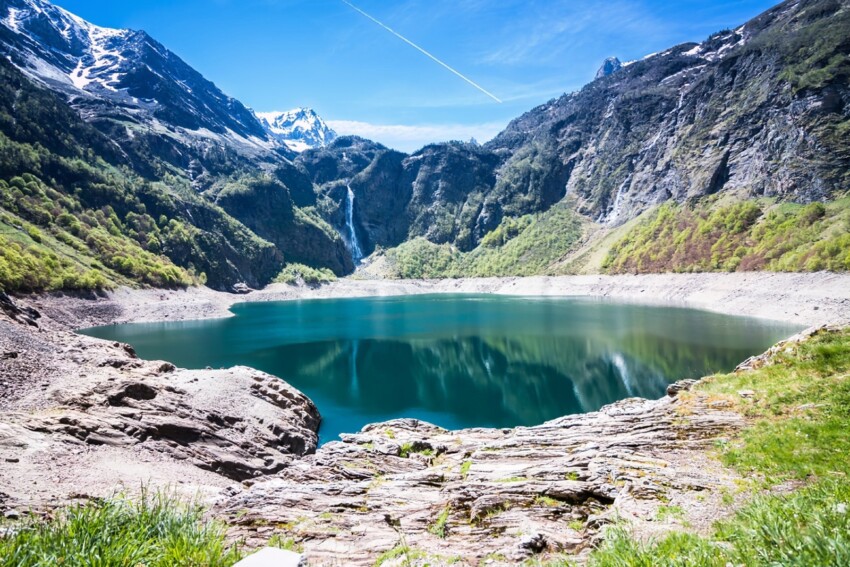
Although not technically an established region, the French Pyrenees are an area of great interest to tourists. Soaring 430 km into the skyline, the Pyrenees, always dusted with snow, offer a glimpse of the wilder side of France. This serrated chain of peaks holds some of the country’s most unspoilt landscapes and rarest wildlife.
They form the natural border between France and Spain and are home to some of the most renowned ski resorts, as well as some of the most picturesque hiking trails in Europe, dotted with small villages, diverse cultures, different languages and unique gastronomies.
